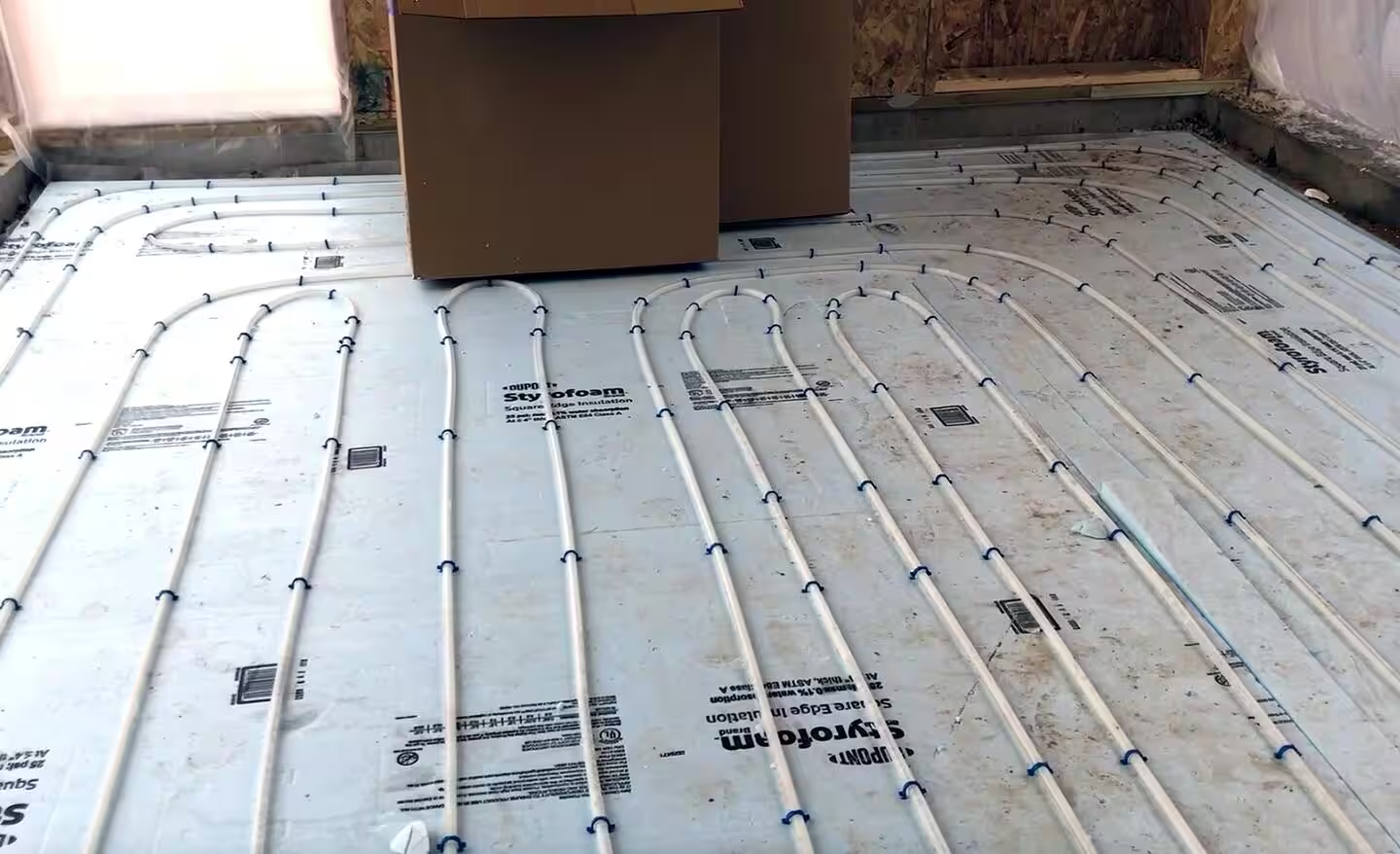Heated floors provide relief from cold feet while making any floor surface more comfortable, such as tile, carpet or whatever your preferred covering is. Plus they help make your home energy efficient!
Installing a hydronic system involves working with electrical wiring, but is still achievable for qualified DIYers. Here are some helpful tips for getting this task completed successfully.
Lay Out the Cables or Mats
No matter if it’s a mat or cable system installation, it is critical that its pattern be carefully laid out. A mat must not come under permanent fixtures such as vanities and bathtubs.
If you are using a heating mat, secure it to the floor with tape or another type of adhesive – avoid staples as these could create short circuits in its wires and short out.
If you are installing a heated cable system, carefully follow its installation guidelines. Insulate common batt insulation over cables if desired to increase energy efficiency of the system. After your heating elements have been placed and tested using a multimeter to confirm proper functioning before covering with flooring material of choice.
Fix the Installation in Place
Once the manifold and pipe loops have been assembled, it’s time to assemble your pipes. Make sure the arrow on your system’s manifold points in the direction of flow, leaving sufficient spacing between individual piping runs.
Knobbed mat systems feature preformed knobs throughout the mat that connect directly with tubing for easy installation. Please refer to your manufacturer for best results.
Electricians licensed to install floor heating systems should install mats or cables into a junction box and connect them to an appropriate thermostat. Employing experienced electricians for electrical work ensures all wiring is done properly and protects heated floors against damage while simultaneously helping avoid frequent breaker tripping. Also take this opportunity to add dedicated circuits for your floor heating system!
Test the Mat or Cables
Recent incidents involving people falling through heated bathroom floors in Niagara-on-the-Lake, Ontario underscore the significance of testing heating cables and mats as soon as they have been installed to ensure they work as intended and no damage was done during installation.
Heated floors are an invaluable addition to any home renovation project, yet installing them yourself can be tricky, particularly if retrofitting an older property.
Once the old flooring has been removed and a waterproof membrane installed to withstand heat, attach any mats or cables needed before adding your flooring material. Test cable resistance using an ohmmeter before proceeding with installation of tiles over it.
Connect the Heating Elements to the Thermostat and Power Supply
Heated floors can make your home even more cozy on those chillier mornings and provide relief to people suffering from arthritis or diabetes in their feet, as well as making life more comfortable for those living with allergies.
Most electric systems use heating mats installed beneath flooring to heat it, while hydronic systems utilize hot water to warm the floor and make for more expensive installation costs; however, hydronic heating systems can serve as your home’s primary source of heating.
If your heating element fails to turn on, this could be a telltale sign that its thermostat or wire has become damaged. Visual inspection may reveal corrosion damage; alternatively, you could use a multimeter to measure electrical resistance of the element and use any readings significantly different from its normal value as indicators that there could be something amiss.
Install the Flooring
Installation of heated floors may be achievable as a DIY project, but doing so requires advanced electrical and plumbing knowledge. To ensure it is completed efficiently and safely, seek professional help instead.
Radiant heating systems employ hydronic tubes or electric coils arranged zigzaggingly underneath the floor that emit heat, radiating up into the room to warm people and furniture alike. While radiant systems may cost more upfront, over time they could save money.
As part of radiant heating in an existing home, aluminum tracks are attached to the joists to hold PEX tubing carrying hot water through PEX tubing that runs continuously without cold spots, without running under vanities, toilets or other fixed fixtures. Once Richard has set up and connected all his heating elements to thermostat and power supply, apply common batt insulation for maximum energy efficiency.

